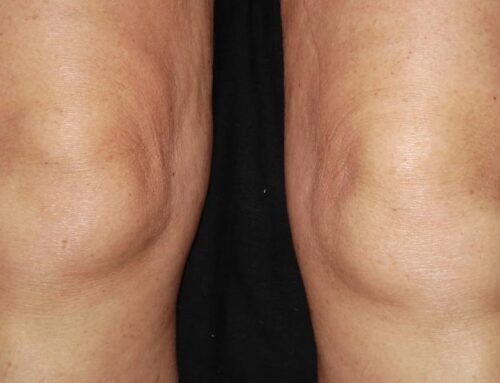Forearm exercises stretch and strengthen the muscles crossing your hands, wrists, and elbows. These are the muscles used in daily life for tasks such as opening a glass jar or carrying a suitcase up a flight of stairs. They’re used in sports such as golf, racquetball, and basketball, too.
Strengthening your forearms also increases grip strength, which is related to upper body strength.
A strong grip helps you carry, hold, and lift items in your everyday life and during athletic activity. Plus, you’ll have more power when you work out, which will bring more strength to your entire body.
How to
For each exercise, do 2 to 3 sets of 8 to 15 repetitions. Do these exercises 2 to 3 times a week. You can do them on their own, before working out, or as part of a longer routine.
Loosen up and improve blood flow to your wrist joints before doing forearm exercises by turning them in circles in both directions, side to side, and back and forth.
With dumbbells
Begin with 5- to 10-pound dumbbells. Gradually increase the weight as you get stronger. Grip the dumbbells tightly throughout the movement. If you don’t have weights, you can use a can of soup or a bottle of water.

Palms-up wrist curl
- While seated, rest your wrists on your knees or a flat surface with your palms facing up, holding a dumbbell in each hand.
- With a dumbbell in each hand, raise your hands as high as you can, keeping your arms still.
- After a slight pause, lower your hands to the starting position.

Palms-down wrist curl
- While seated, rest your wrist on your knees or a flat surface with your palms facing down, holding a dumbbell in each hand.
- Keep your arms still as you raise your hands as high as you can.
- After a slight pause, return your hands to the starting position.
Grip crush

- While seated, rest your left wrist on your knee or a flat surface, holding a dumbbell.
- Relax and open your hand so the dumbbell rolls toward your fingertips.
- Tighten your hand and curl your wrist up as you squeeze the weight as tight as possible.
With machines
Behind-the-back cable curl
- Hold the handle of a low pulley with your left hand, placing your right foot slightly in front of your left.
- Walk a few steps away from the machine.
- Slowly curl your arm to bring your hand up toward your shoulder.
- Pause here before lowering your arm to the starting position.

Towel cable row
- Attach a towel to a cable pulley and stand in front of it.
- Hold one end of the towel in each hand.
- Draw your shoulder blades together as you bring the towel to your chest in a rowing motion.
Without weights
Pullups

It’s back to the basics for this exercise. You’ll need a bar or something that’ll support your weight.
- The ideal hand position is with your palms facing away from you, but if it’s easier, you can face your palms toward you.
- Activate your forearms more by gripping the bar more tightly or using a thicker bar.
- Lift yourself toward the bar.
- You can increase the size of a bar by wrapping a towel around it.
Dead hangs

- Grip the bar and hold there for as long as possible, with your elbows slightly bent.
- This helps to develop grip strength and is easier than doing pullups.
Forearm pull

- Hold the weight bar of a pulley machine at shoulder level with your palms facing down.
- Draw your upper arms in toward the side of your torso.
- Push the weight all the way down.
- Pause here, then return to the starting position.
Farmer’s walk

To increase the difficulty, wrap a towel around the handles.
- Use an overhand grip to carry heavy weights or bags with your arms alongside your body.
- Maintain good posture, keep your chest open, and draw your shoulders down and back.
- Walk for 30 to 40 feet per set.
- Do 2 to 5 sets.
At home
Forearm squeeze

Use a pair of forearm grips or another object that you can squeeze, such as a tennis ball or a sock.
- Extend and then flex your fingers to squeeze the item.
- Hold for 3 to 5 seconds and then relax your grip for a few seconds.
- Continue for 10 to 15 minutes.
- Do this 2 to 3 times per day.
Fingertip pushups

- Kneel down by a bench or sturdy object, and bring your fingertips down on the surface.
- Slowly and with control, bring your chest to the bench, bending your elbows at a 90-degree angle.
- Return to the starting position.
- Do 2 to 3 sets of 8 to 12 repetitions.
Crab walk

- Come into reverse tabletop position.
- Place your hands under your shoulders with your fingers facing forward.
- Align your ankles directly under your knees.
- Walk forward on your hands and feet for up to a minute at a time.
Building a routine
You can do these forearm exercises on their own or along with your workout routine. Get started with a few, and then change up your routine every so often by incorporating more exercises.
If you’re doing the exercises in addition to strenuous activity, make sure you don’t fatigue your muscles. Do these exercises for a short time each day, and then devote time for a longer session one to two times per week.
Allow for one full day of rest between longer sessions to allow your muscles time to recover.
Benefits
If you do these forearm exercises consistently, you’ll see results in the strength of your arms as well as your elbows, wrists, and hands.
Gripping and lifting objects will be easier, and you’ll be less likely to have an injury. Plus, you’ll bring strength to other areas of your workout or weightlifting routine by being able to squeeze, push, and pull with more force.
Cautions and modifications
If you’re not sure where to begin or would like some guidance, get in touch with a fitness expert. They can address any specific concerns you may have, set you up with a routine, and make sure you’re doing the exercises correctly.
When doing these exercises, only go to the degree that’s appropriate for your body. Be gentle, and make sure you can maintain smooth, controlled breathing that mimics your movements. Avoid any jerky motions.
Stop if you’re feeling pain or anything beyond a mild sensation. If you experience soreness after these exercises, ice the affected area and try light stretching to reduce tension.
If you have any injuries or medical concerns that could be affected by forearm exercises, it’s best to avoid them or do them under the guidance of your doctor or physical therapist.
The bottom line
Forearm exercises can build strength and increase grip strength, both of which benefit a wide range of physical activities. To see the best results, be consistent in your practice and make a commitment to stick to your routine.
Give yourself plenty of time to recover in between workouts, and vary your workout routine on a weekly basis.



